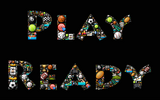
English Instructional Plan – Context Clues: Grade 3
- Subject:
- English
- Reading
- Material Type:
- Lesson Plan
- Author:
- VDOE Project Team
- Date Added:
- 04/13/2022

English Instructional Plan – Context Clues: Grade 3

English Instructional Plan – Context Clues Grade 4-5


This video is part of the Continue to Know with WHRO TV series. Watch LaTissha Boyce teach about how to use context clues to decode unfamiliar words.

In this PowerPoint presentation students will learn that contraction is a shortened form of two words. They will learn some common contraction rules, look at some commonly used contractions and then get to practice.

Contractions Worksheet; can be used as small group, whole group or independent station work. Directions: Complete the missing part of each contraction equation.

This video is part of the Continue to Know with WHRO TV series. Watch Chautauqua Hopson teach about the correct spelling of frequently used words.

Cotton Candy Poem Analysis (figurative language and poetic structure)

TSW learn how to argue a position and introduce a counterclaim. As most of our writing for Grade 8 is persuasive or expository, this is a good assignment for any week within the first semester (Q1 or Q2). This will follow the same outline of writing as their 42 SOL prompts. The question is “should information be restricted in all areas by the government or in only certain areas?”

In this unplugged lesson, students will deepen their understanding of algorithms and the need for precise, sequenced instructions. They will create algorithms for drawing crazy characters. Then, they will test and refine these algorithms by challenging teammates to follow their instructions and compare. They will also use cause and effect in this lesson.

Create your own Physical Education Game is a cross-curricular lesson designed by an Elementary Health and PE teacher to support Language Arts instruction. Created By: Anthony (Cullen) Freund and Steve Ellison of Powhatan County Public Schools.

Adam Seipel, with VaSCL (Virginia School Consortium for Learning), provides this recorded presentation and slide deck for creating a learning community with your students who are at home using Google Meet and Flipgrid.

In this lesson the students will understand how their brain is similar to a computer in that we have access to a primary memory, secondary memory, we have a processor that functions as our CPU, some of us have a GPU that helps us with seeing our information, and we work off of the input that we are given and form that into a suitable output. Students will be making their own study guide to help them with a given novel study test. The students will understand that the input is what information they were given and the output will be their study guide that they created. This lesson will take place after the class has completed a novel and prior to their summative test on that novel. This lesson can take place anytime during the semester. In the example given, this takes place during the first quarter.

Good Night Gorilla by Peggy Rathman is an engaging book for students who will find it funny to see that after the zookeeper has put all the animals to bed for the night, the gorilla goes behind him and unlocks all the cages to free the animals who then follow the zookeeper home. An algorithm is a set of step by step directions and the zookeeper definitely needs an algorithm to follow. It is up to the students to help the zookeeper keep all the animals where they belong each night.

This video is part of the Continue to Know with WHRO TV series. Watch Tiffany Hale teach about credible resources and effective research.

English Instructional Plan – Critical Reading of Nonfiction

English Instructional Plan – Cross-cultural Literary Analysis

Each student writes a one paragraph summary of a chapter of a book and then illustrates their chapter. It can be used for a book the whole class is reading so then all of the summaries are collected and bound together to create a “summary book” of the book read. This activity can be used for both fiction and non-fiction books in any subject and any grade, although this activity is linked to upper primary SOLs. This activity assesses reading comprehension and practices all writing skills. It also includes Art SOLs, and if you have students create their final products on the computer, then you would be incorporating the Computer Technology SOLs as well. If it is used for a non-fiction text in a different content class, then the activity would also cover those SOLs. It can be used for EL classes in middle school also.

English Instructional Plan – Crowd Sourcing False Premise Analysis and Rewriting for Clarity

English Instructional Plan – Crowd-Sourcing Thesis Writing